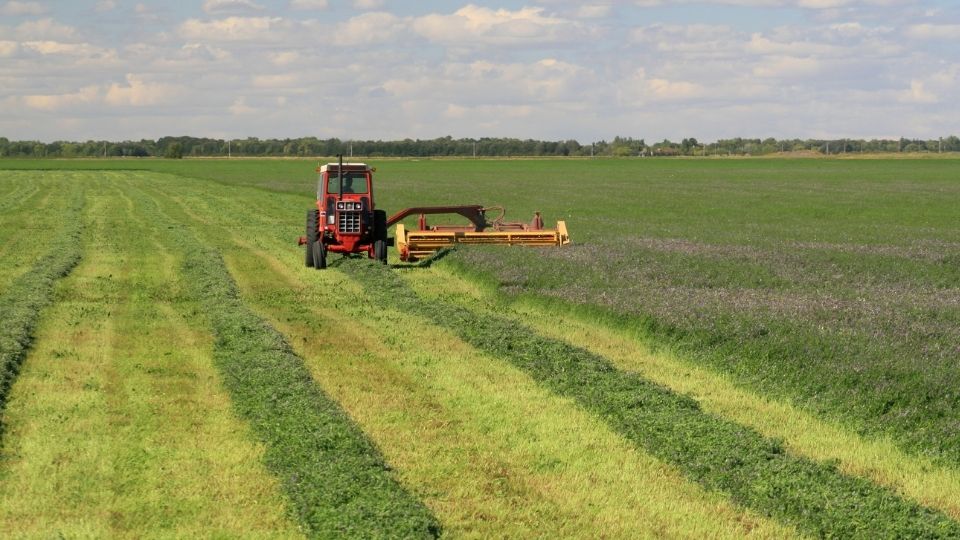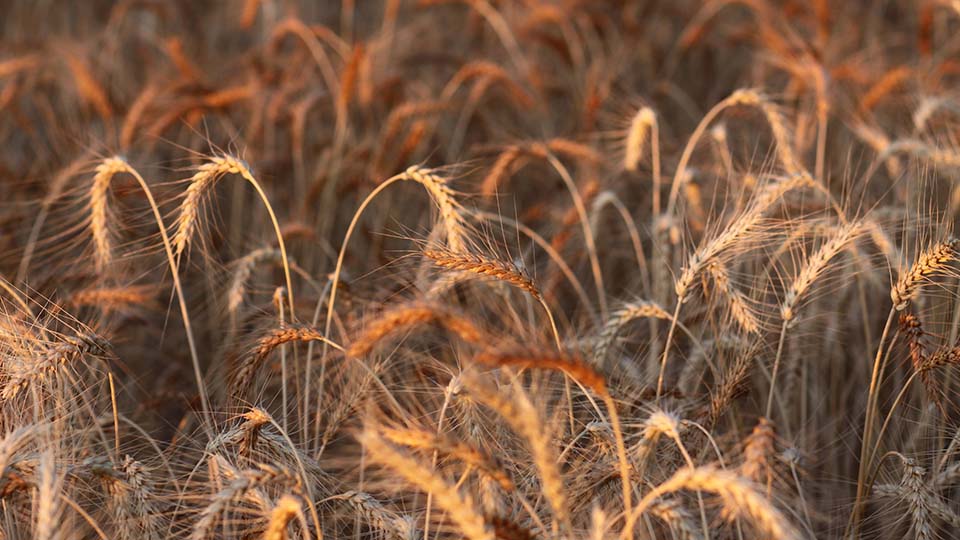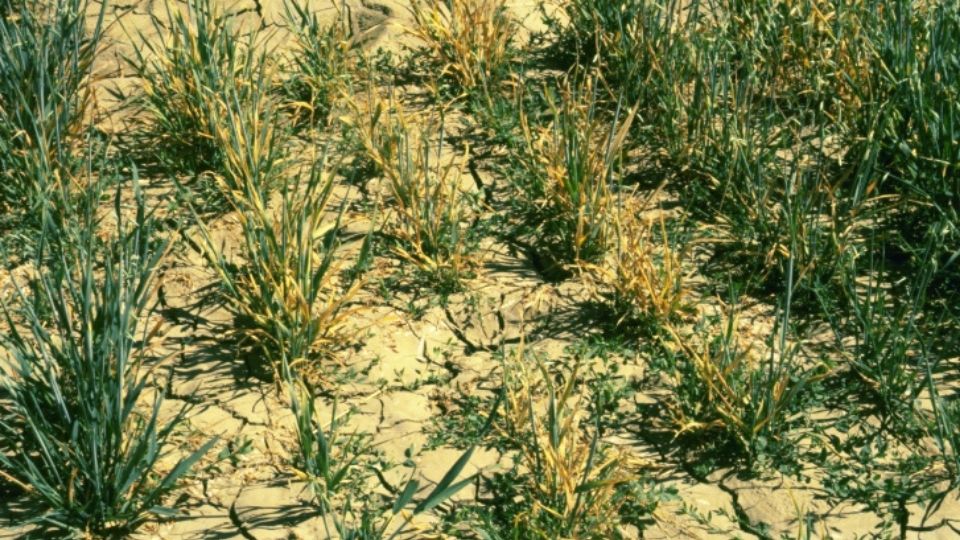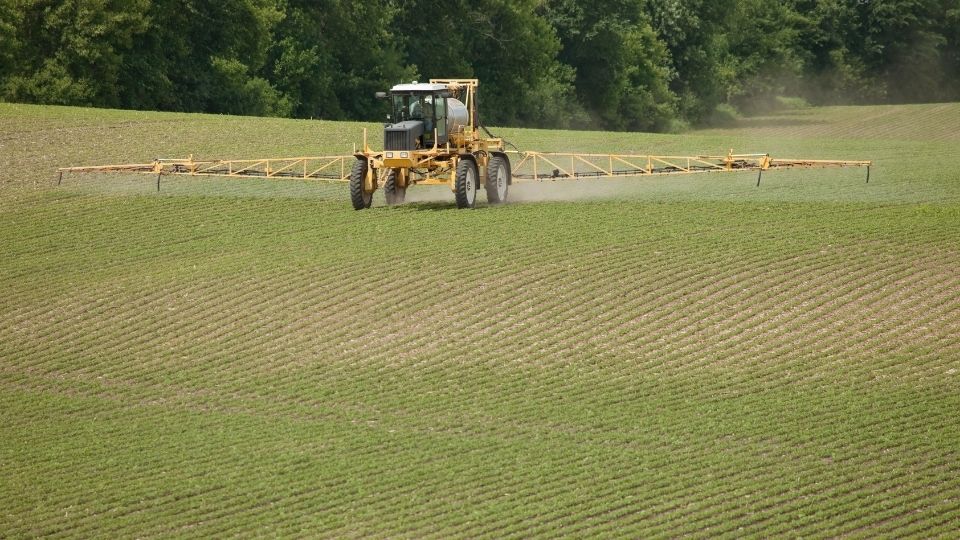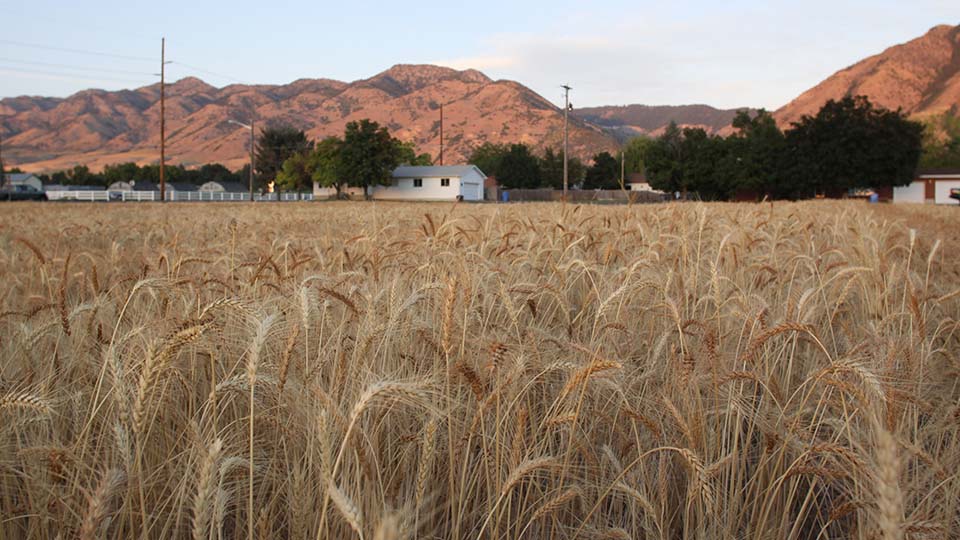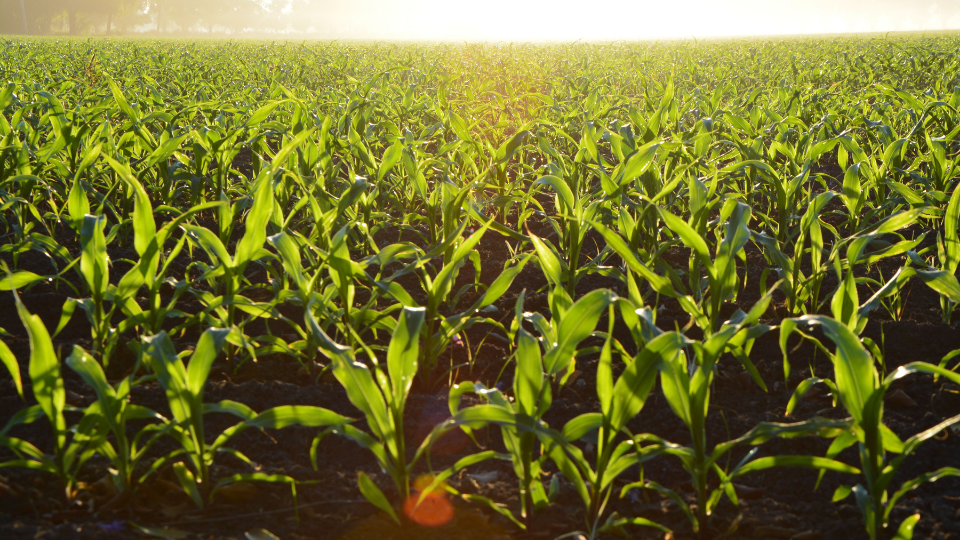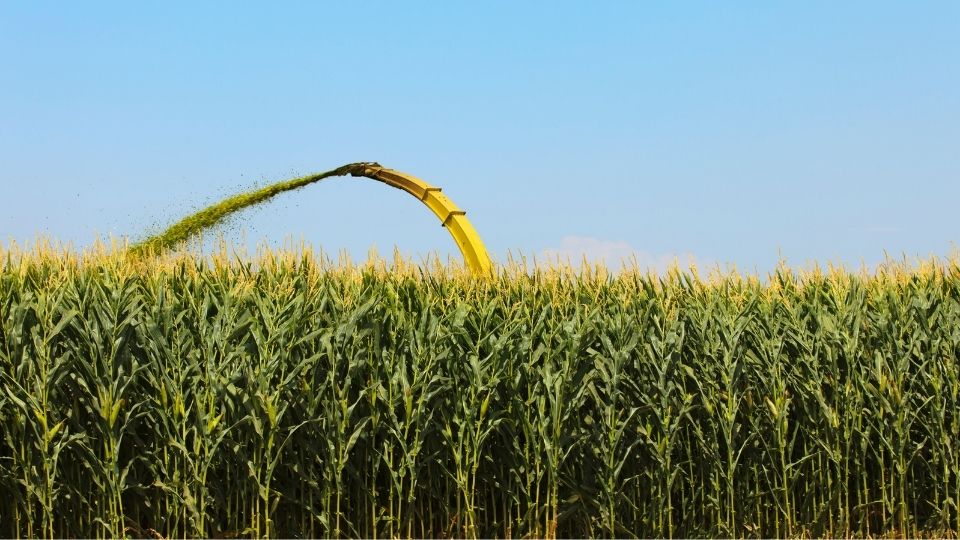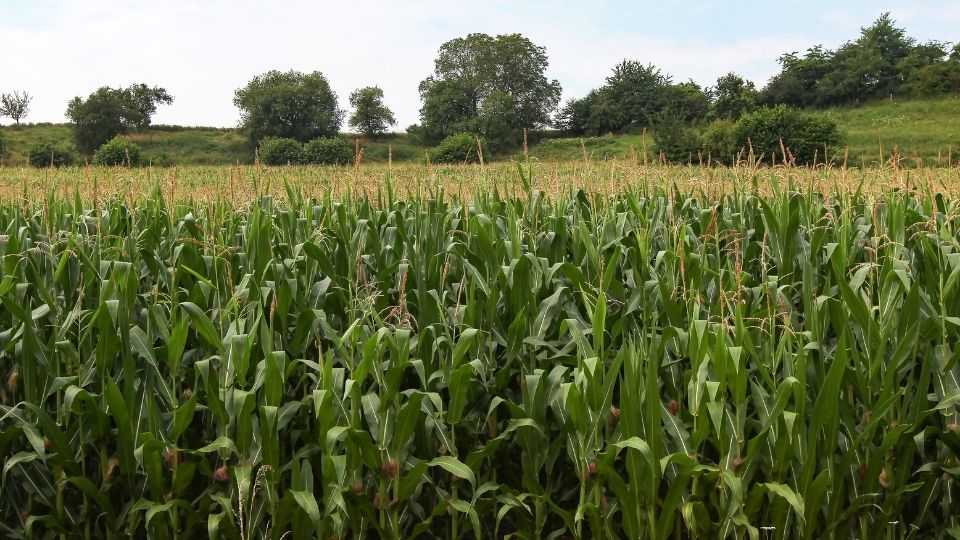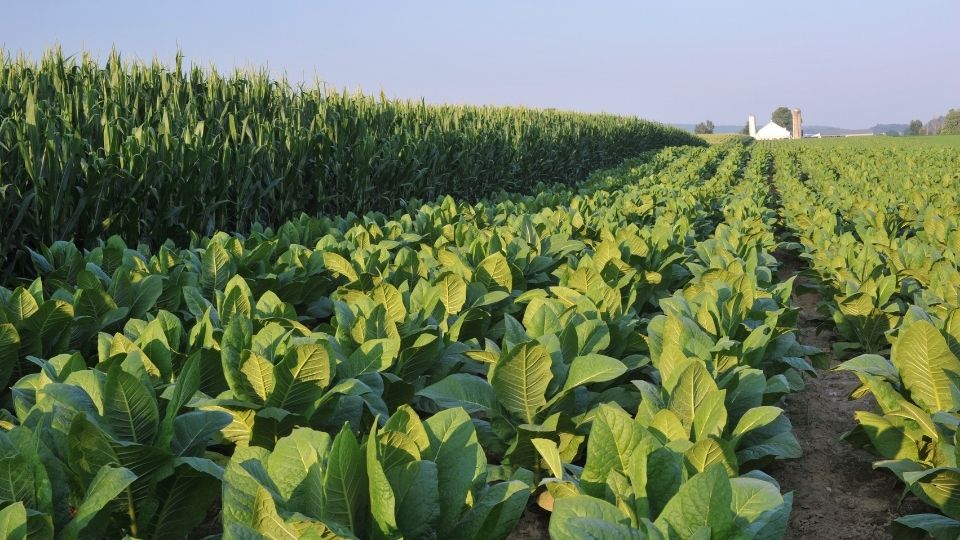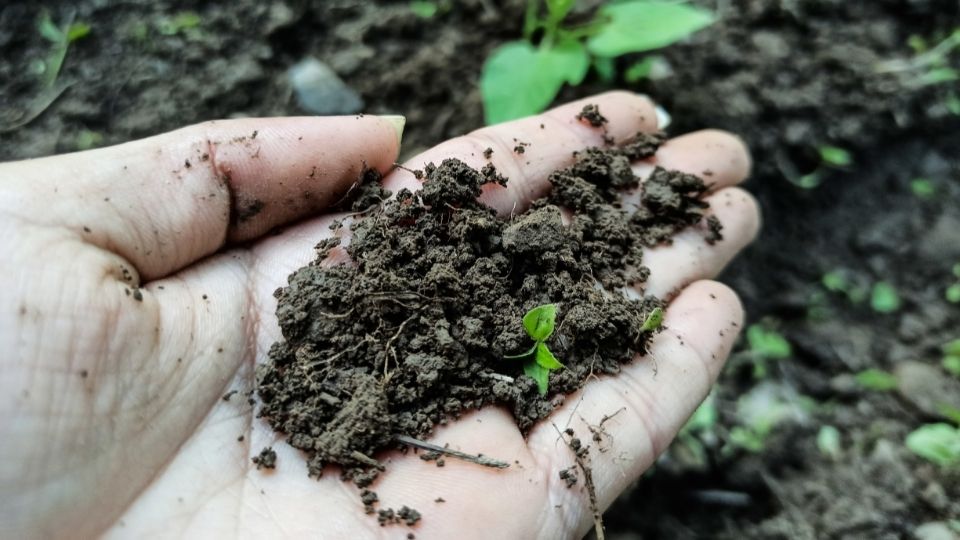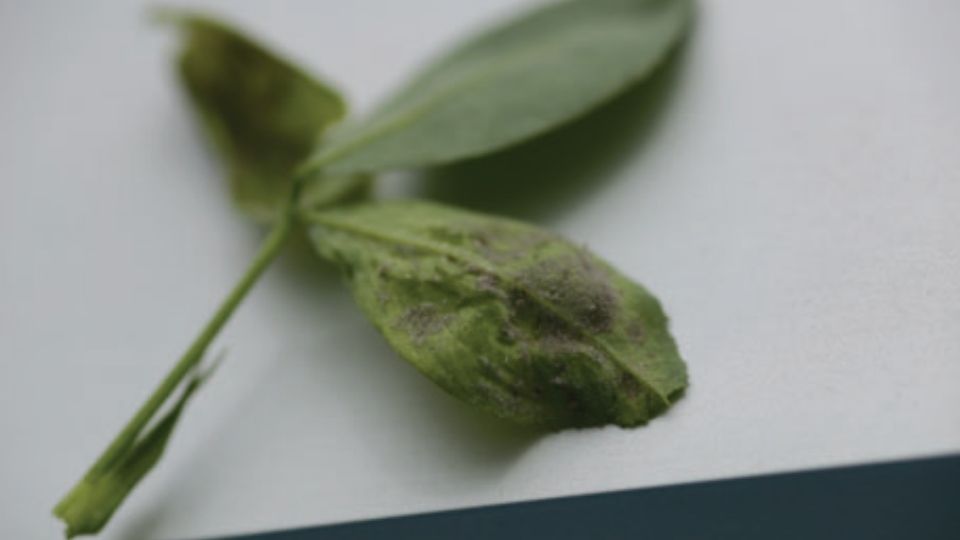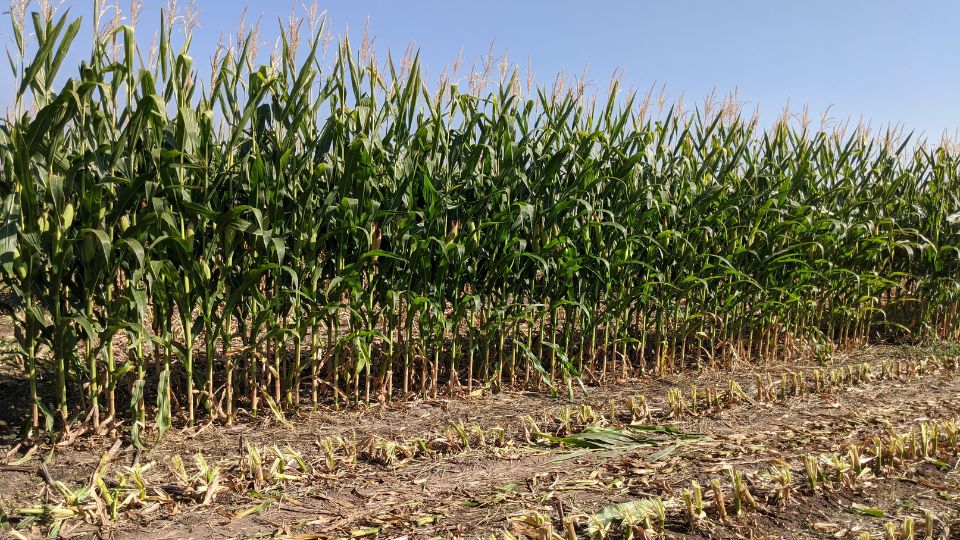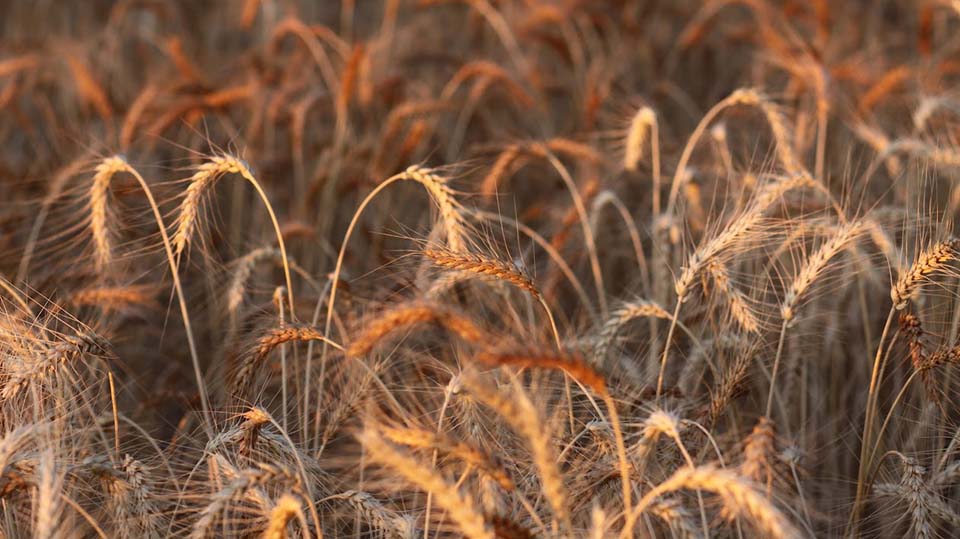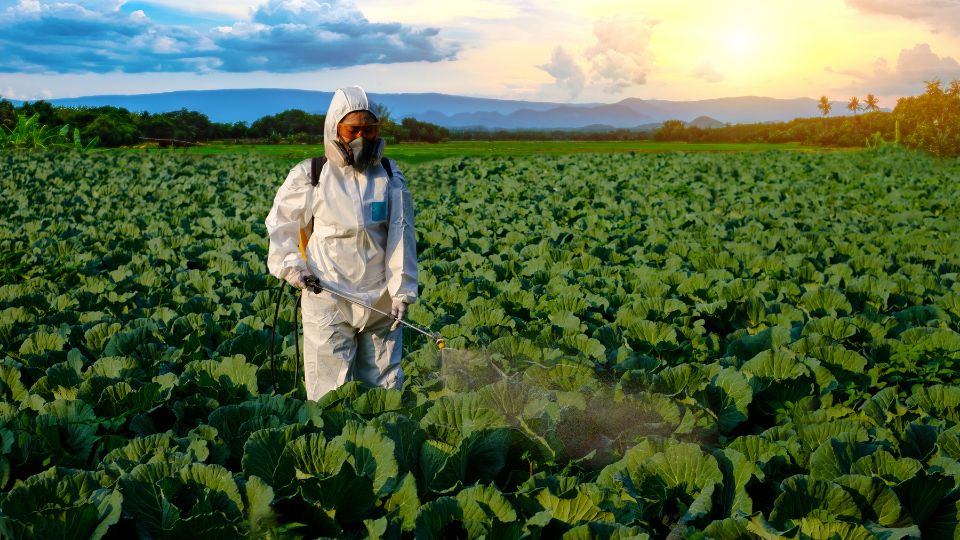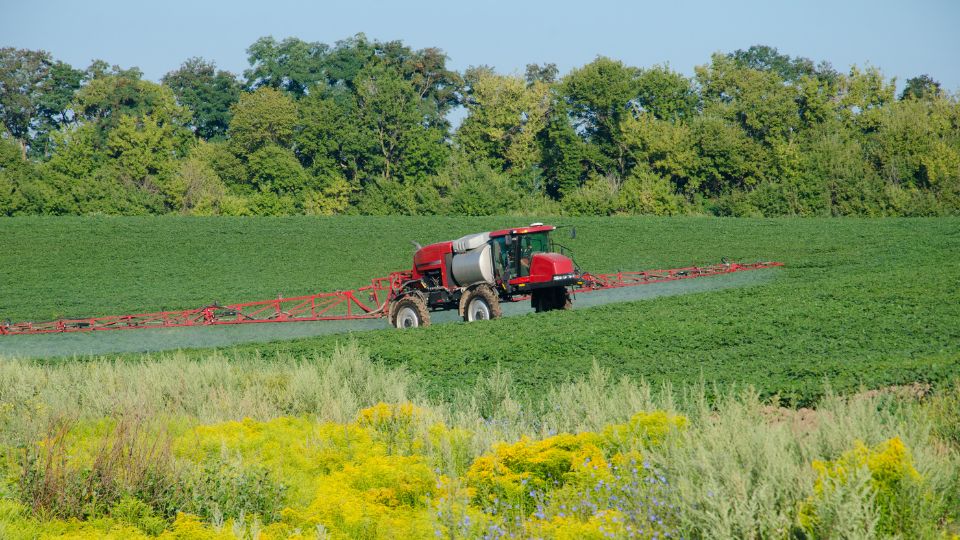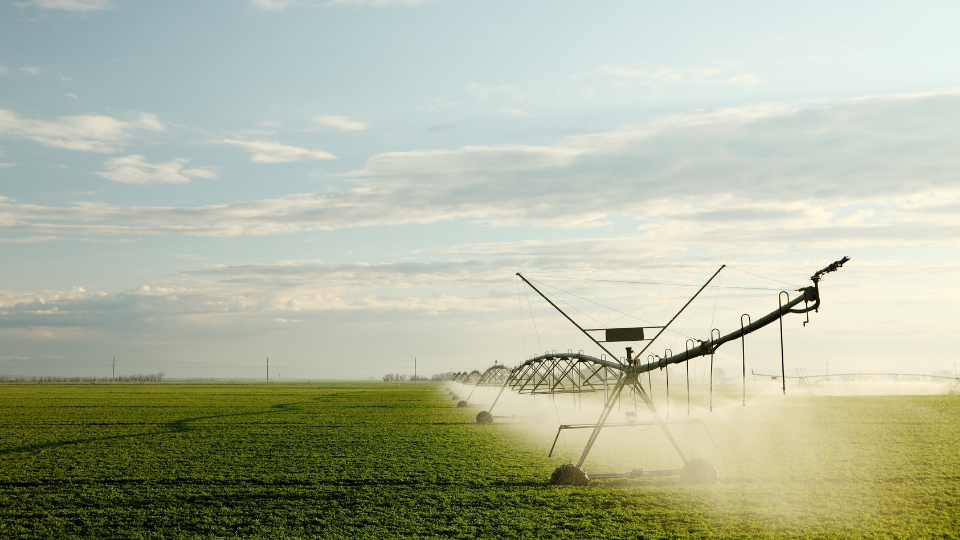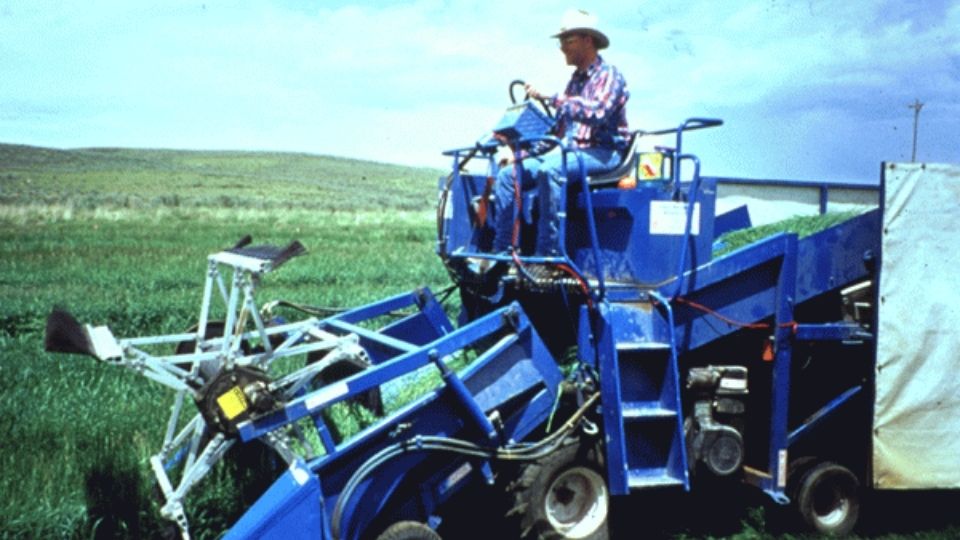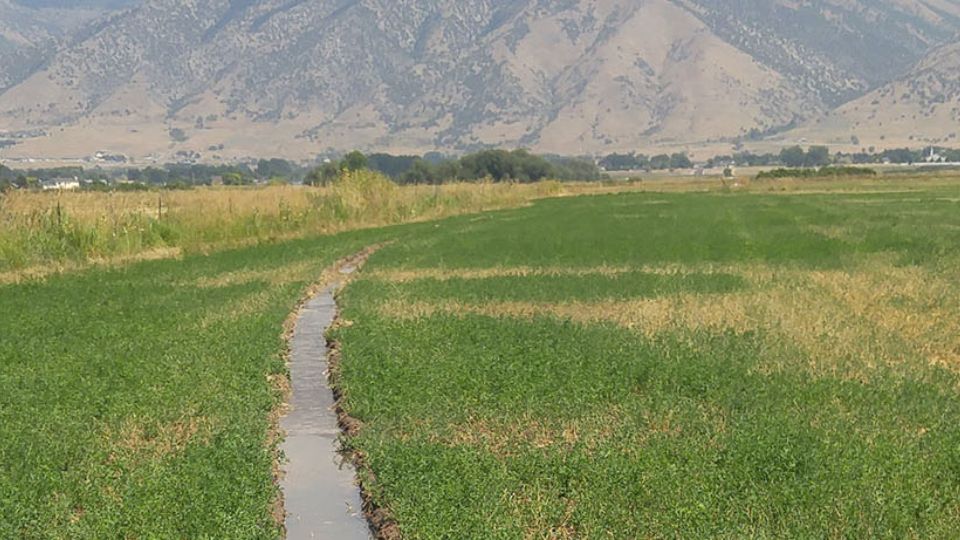Chopping and Storing Quality Corn Silage
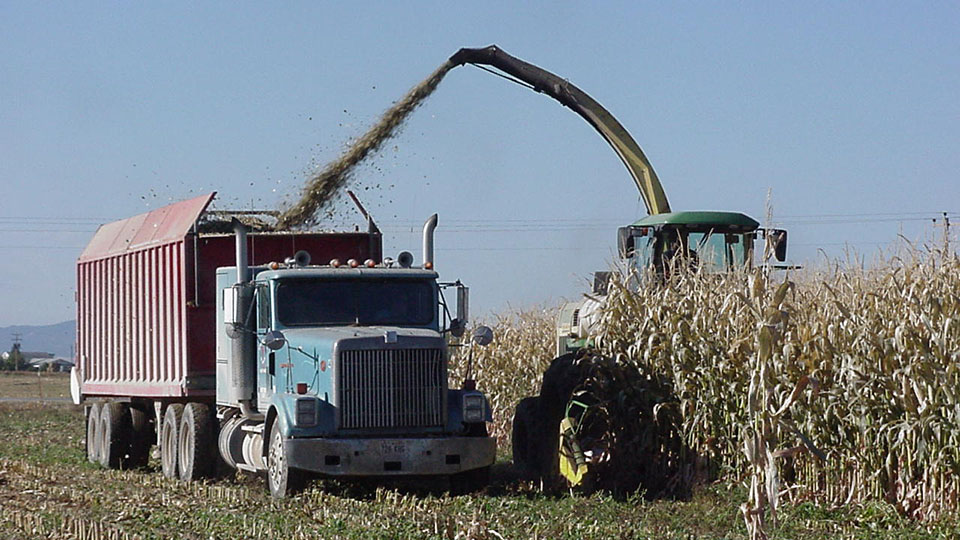
Introduction
Utah growers produce approximately 990,000 tons of corn silage annually, providing important forage in livestock and dairy diets. Properly harvested and stored, corn silage is extremely palatable, superior to other forages in energy content, a great fiber source, and relatively consistent in quality. The high palatability of corn silage encourages feed intake which contributes to higher milk yields, greater weight gains and additional farm profits.
The Ensiling Process
There are four basic phases in the ensiling process. In the aerobic phase (phase 1), oxygen trapped in the air spaces of the silage mass is consumed by plant respiration and aerobic microorganisms. If the silo is well-packed, the amount of available oxygen is minimal and soon the lag phase (phase 2) begins. Almost immediately plant cell membranes break down, allowing cell juices to become a growth medium for anaerobic bacteria. Fermentation (phase 3) begins as the anaerobic lactic acid bacteria begin to grow and rapidly multiply. As the bacteria grow, they use plant sugars and produce lactic and acetic acids, the accumulation of which reduces the pH of the forage. When the pH reaches approximately 4.0, the bacteria die and the silage begins the stable phase (phase 4). If the silo is properly packed and sealed, this phase lasts until the silo is opened and silage again comes in contact with oxygen.1
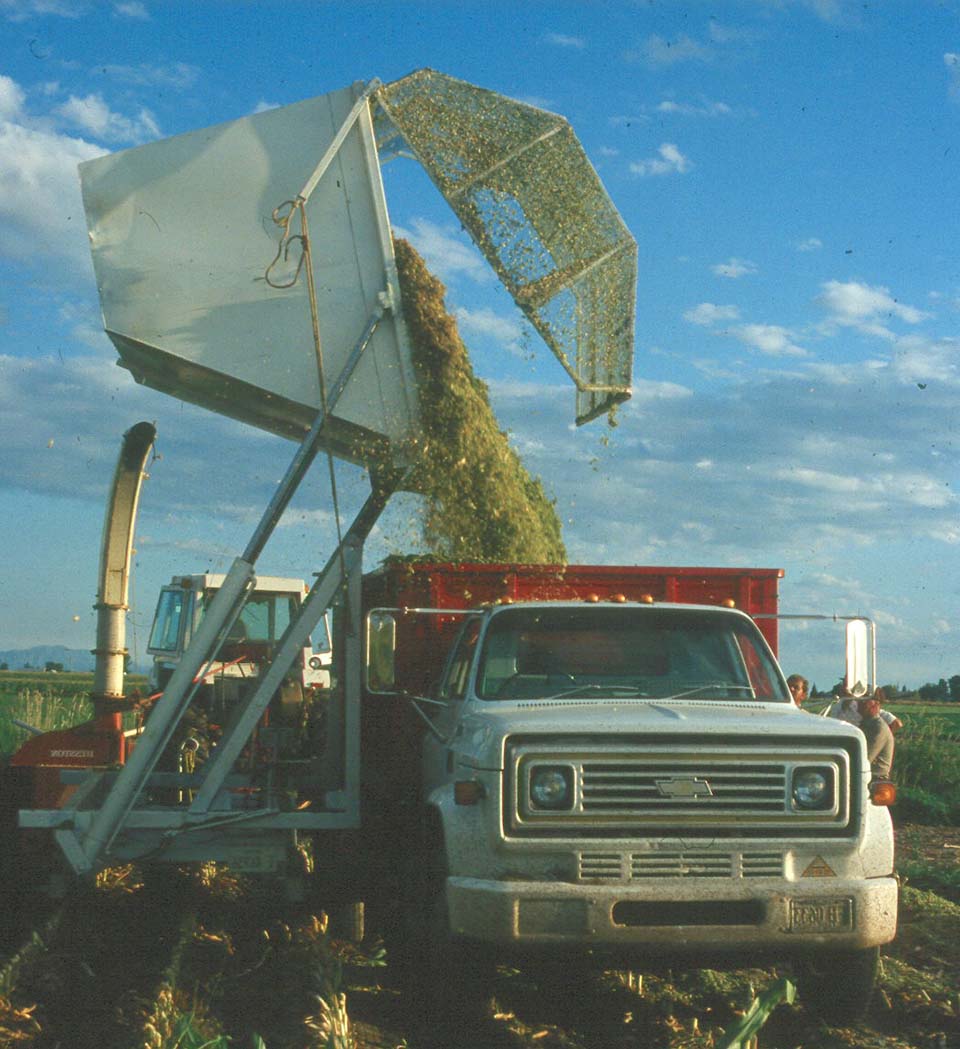
Cutting Length and Kernel Processors
Particle size at harvest depends on knife sharpness, harvest speed, shear bar setting and crop moisture. Forage particles need to be long enough to float in the rumen and maintain the rumen fiber mat. This is critical to stimulate rumination, increase milk production, and augment growth rates. Corn silage that is chopped too fine or over-processed passes through the rumen too quickly, leading to reduced feed efficiency. Dairymen can usually expect higher butter fat and protein percentages and fewer displaced abomasums with a longer chop. Drier corn needs to be cut shorter to facilitate packing.
There is considerable interest in kernel processing as some studies have reported increased milk flow from dairy cows fed processed corn silage. Steers and heifers receiving processed corn silage usually show greater weight gains and are more efficient than cattle fed unprocessed corn silage. Kernel processing corn silage improves dry matter intake, starch digestion, and lactation performance. There is also less sorting and cob refusal at the feed manger for total mixed rations containing processed whole plant corn silage.2 Kernal processors break corn kernals into smaller fractions as the forage passes through two rollers that have a clearance about the thickness of a dime. The two rollers operate at different revolutions per minute, which results in a shearing of the stover. Since the entire corn plant is affected, the term crop processor may be more appropriate. Processing improves ruminal digestion of corn silage.
Forage specialists advise a short length of chop without a kernel processor or a longer length of chop if a kernel processor is used. A general recommendation is to chop corn silage with a chop length ranging from .50 to .75 inches if not kernel processed at harvest, or 1.00 to 1.50 inches if a kernel processor is used. 3
Cutting Heights
Since the corn plant has a higher proportion of lignin in the lower third of the plant, some growers have experimented with increasing the cutting height from the typical 6 to 8 inches to 18 inches. The theory of high-chopping is that digestibility of the resulting silage could be improved if the bottom part of the plant is not put into the silo. Research has shown, however, that high-chopping corn silage improves the neutral detergent fiber digestibility of the silage by only one or two units, while reducing yields by a much higher percentage.4 When high nitrates are suspected, usually from brief droughts, increasing the harvest height may be justified because the bottom portion of the plant contains a much higher level of nitrates. If nitrates are a concern, a lab test to determine nitrate levels following fermentation may prove to be a wise investment.
Role of Inoculants
Numerous additives are available that may enhance the ensiling process. The most common bacterial inoculants are the lactic acid forming type, Lactobacillus. They work by accelerating the acid production needed to preserve the silage. Silage treated with a legitimate inoculant will generally stabilize faster and, therefore, maintain higher amounts of nutrients than untreated silage. Inoculants can be a good management tool when used with other best management practices.
Forage harvester manufactures have made impressive progress in designing low volume inoculant applicators that work in concert with yield monitors. In areas of the field where yields are lower, the technology applies less inoculant. Where yields are higher, it applies more to ensure the forages are not under inoculated. This method is far superior to spreading inoculants to loaded trucks or manually spreading the product at the silage bunker. Inoculants contain live bacteria that can lose their viability if not handled and stored properly.
Density of Packing
Most growers or silage contractors have the ability to chop corn at a faster rate than it can be properly packed, and slowing the delivery rate is not a realistic option. Adequate packing at the bunker to achieve the minimum recommended density of 15 to 18 pounds dry matter per cubic foot can be a challenge. Feed quality is reduced in loosely packed bunkers because of increased dry matter and nutrient losses from aerobic decay.5
One commonly used guideline to maximize silage density is the minimum need of 800 pounds of packing weight per ton of silage delivered per hour. (Table 1) Packing density can be improved if workers limit push-up layers to 6 to 12 inches and have plenty of tractor power. Most farmers need more than one packing tractor to keep up with the chopper. The heavier the packing tractors, the better will be the density of the corn silage. Tractor weight can be increased by adding weight to the front of the tractor or to the 3-point hitch on the back. Filling the tires with fluid is also helpful. Dual wheels can provide additional tractor weight and stability. Experts suggest keeping packing time in the range of 1 to 3 minutes per ton of fresh forage. Extra time spent packing the surface will improve the density of the critical top level by assuring sufficient wheel contact over the entire surface (Table 2).
| Table 1. Dry matter loss as influenced by silage density | |
|---|---|
| DensitylbsDM/ft3) | DM Loss at 80 Days |
| 10 | 20.2 |
| 14 | 16.8 |
| 16 | 15.1 |
| 18 | 13.4 |
| 22 | 10.0 |
| Adapted from the text: Bunker Silo Management: Four Important Practices by Keith K. Bolsen | |
| Table 2. Packing tractor recommendations | ||
|---|---|---|
| Tons Forage Delivered / Hour | Pounds Packing Tractor(s) Needed | Minutes Packing Time Needed / Hour |
| 40 | 32000 | 40-120 |
| 60 | 48000 | 60-180 |
| 80 | 64000 | 80-240 |
| 100 | 80000 | 100-300 |
| 125 | 100000 | 125-375 |
| 150 | 120000 | 150-450 |
| 200 | 160000 | 200-600 |
Lower densities are consistently measured along bunker walls or on the outside edges of silage piles. Paying extra attention to packing along the bunker walls with narrow tires on a heavy tractor could be a way to reduce feed losses. Only an experienced operator should be trusted along a wall with large equipment.
Covering the Bunker
Silos not properly sealed immediately after harvest will have significant losses of feed quality. The average losses of dry matter vary depending on moisture and feeding rates, but it is not uncommon to show an average dry matter loss of 30 percent from the top three feet of the bunker.6 Professionals recommend the use of 4 to 6 mm black or black/white plastic, overlapped by 4 to 6 feet, and secured with uniform weights such as 15 to 20 used tires per 100 square feet. Protecting chopped corn from exposure to oxygen, sunlight, rain and snow is always cost effective. Research shows an estimated return of $8 for every $1 invested in covering silos. Many areas have professional crews that specialize in covering and uncovering bunker silos in a timely manner. 7
Managing the Feedout Face
Corn silage needs at least 45 to 60 days to become uniformly preserved and for the kernels to reabsorb moisture and soften, making them easier to digest. Feeding unfermented or partially fermented silage will not provide the full economic or production benefits possible from properly fermented corn silage.
Silo face management is important in managing aerobic deterioration in silage. Loose silage is more porous and allows greater air infiltration, increasing the rate of aerobic growth and growth of molds and yeasts. Maintaining a firm face and cleaning up loose silage that has fallen to the floor of the silo on feedout will help minimize aerobic losses. Keeping an even, clean face on bunker silos is an important management factor.
At feed out, silage should be removed from the whole silage face at a minimum rate of 6 inches per day. Feedout rate is a function of the number of animals being fed, the amount of silage fed in the diet, and the silo design. Thus, silo design and size should be matched with the feeding rate in order to minimize silage losses during feedout. 8
Safety Considerations
Chopping corn and packing bunkers can be dangerous work. Powerful equipment, hasty workers, and long hours are a perilous combination. Careful operators give priority to properly maintained equipment making certain all guards and shields are in place. Equipment must always be turned off when making adjustments or diagnosing problems. Space tractor and equipment wheels as far apart as possible to increase stability. Watch carefully for distracted workers when dumping trucks or packing bunkers. Silage should not be packed too high or too steep, increasing the likelihood of rolling the packing tractor. Workers must always be careful around the feedout face of silage bunkers since cave-ins can bury workers with no warning. Accidents happen quickly and workers cannot be too careful.
References
- Pitt, R. E. 1990. “Silage and Hay Preservation.” A publication of the Northeast Regional Agricultural Engineering Service, NRAES-5.53 pages.
- Bal, M. A., Shaver, R.D., Jirovec, A.G., Shinners, K.J., Coors, J.C. 2000. “Crop Processing and Chop Length on Corn Silage: Effects on Intake, Digestion, and Milk Production by Dairy Cows.” J Dairy Sci 83:1264-1273.
- Patrick D. French, Dairy Science Dept, Virginia Tech, Getting More out of Corn Silage. www.dasc.vt.edu/extension/nutritioncc/frnch99a.pdf
- Walker, P., Carmack, J.M., Brown, L., Owens, F. 2009. “Impact of High Chopping Corn on Silage Composition.” www.livestocktrial.uiuc.edu/uploads/dairynet/papers/
- Bolsen, K.K., R.E. Bolsen, B.E. Brent. 2005. “A trouble shooter for nine common silage problems,” Kansas State University, http://222.oznet.ksu.edu/pr_silage
- Holthaus, D.L., M.A. Young, B.E. Brent, L. Pfaff, and K.K. Bolsen. 1995a. Losses from top spoilage in horizontal silos. Kansas Agric. Exp. Sta. Rpt. of Prog. 727:59.
- Bolsen, K.K. 2004. Unpublished field data trial comparing standard plastic and oxygen barrier film on bunker silos of corn silage and high moisture corn. Kansas State University, Manhattan, KS.
- Bolton, K., and B.J. Holmes. 2004. Management of bunker silos and silage piles. www.uwex.edu/ces/crops/uwforage/mgnt-bunkers-piles-bjh2.pdf
Revised November 2012 and published to the Web January 2013
Utah State University Extension
Peer-reviewed fact sheet
Authors
Clark Israelsen, James Barnhill, Mike Pace, Linden Greenhalgh, Jody Gale
Utah State University Agricultural Extension Agents
Related Research





